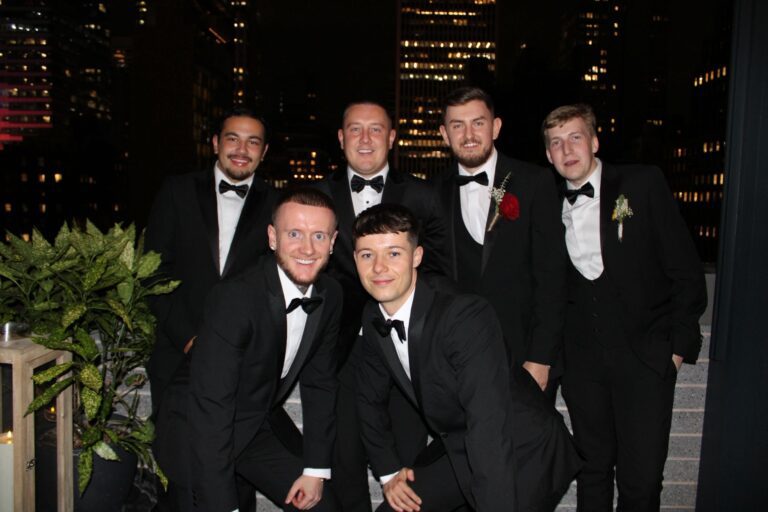Weddings are a beautiful tapestry of rituals and customs that have been passed down through generations. While some traditions may seem quirky or even mysterious, each has a unique story that adds richness to the celebration of love. Let’s take a journey through ten popular wedding day traditions and uncover their origins.
1. The White Wedding Dress
The iconic white wedding dress is often associated with purity and innocence, but it wasn’t always the standard. Before the 19th century, brides typically wore their best dress—no matter the colour. The tradition of wearing white began with Queen Victoria, who wore a white gown for her marriage to Prince Albert in 1840. Her choice was considered unusual at the time, but it quickly set a trend that spread across Europe and beyond, solidifying white as the classic bridal colour.
2. Something Old, Something New, Something Borrowed, Something Blue
This popular rhyme originates from an old English superstition, that each item is meant to bring good fortune to the bride. “Something old” represents continuity, “Something new” offers optimism for the future, “Something borrowed” symbolizes borrowed happiness, and “Something blue” stands for purity, love, and fidelity. The rhyme often ends with “a sixpence in your shoe,” which is meant to bring wealth to the couple.
3. The Wedding Cake
The wedding cake has a rich history, dating back to ancient Rome. Instead of a sweet confection, Roman weddings featured a simple barley or wheat cake that was broken over the bride’s head to symbolize good luck and fertility. This evolved in medieval England, where guests would bring small cakes to stack in a tower—the higher the stack, the more prosperous the marriage. Today’s tiered wedding cakes pay homage to this tradition, and cutting the cake together symbolizes the couple’s first joint task as newlyweds.
4. Throwing Rice (or Confetti)
The practice of showering the newlyweds with rice, confetti, or flower petals is rooted in ancient fertility rites. In many cultures, seeds, nuts, or grains were thrown at the couple to wish them a fruitful marriage. Rice, in particular, was chosen for its symbolism of prosperity and abundance. Modern couples sometimes opt for eco-friendly alternatives like flower petals, bubbles, or birdseed, but the underlying wish for a bountiful union remains the same.
5. The Wedding Ring
The tradition of exchanging wedding rings dates back over 4,800 years to ancient Egypt. Egyptians believed that a circle, with no beginning or end, symbolized eternity. The ring was placed on the fourth finger of the left hand because they believed that a vein in this finger, the “vena amoris,” ran directly to the heart. This practice was later adopted by the Romans and has since become a universal symbol of commitment and love.
6. The Bridal Bouquet
Carrying a bouquet of flowers is a tradition that has evolved significantly over time. In ancient times, brides carried bunches of herbs and spices, like garlic and dill, to ward off evil spirits. Flowers eventually replaced herbs, chosen not just for their beauty but for their symbolic meanings. For example, roses symbolize love, lilies represent purity, and ivy signifies fidelity. Today, brides often choose flowers that have personal significance or that match the theme of their wedding.
7. The First Dance
The first dance is a tradition that likely originated in European aristocratic balls. The couple of honour would open the ball with a dance, and this custom was adopted into weddings as a symbol of the couple’s first steps together as husband and wife. The choice of music has evolved, from classical waltzes to modern love songs, but the sentiment remains the same—a romantic and memorable start to their new life together.
8. The Veil
The bridal veil has roots in both ancient Roman and Greek weddings, where it was worn to protect the bride from evil spirits. In some cultures, the veil was also a symbol of modesty and purity. During arranged marriages, it was used to conceal the bride’s face until the ceremony was complete. Today, while veils are often a fashion choice, they continue to carry the weight of these historical meanings.
9. Tying the Knot
The phrase “tying the knot” comes from an ancient Celtic tradition called “handfasting,” where the hands of the bride and groom were tied together with a ribbon or cord during the ceremony to symbolize their union. This practice was also common in other cultures, including Hindu and Roman weddings. The knot represented the strong bond and commitment between the couple, and over time, the phrase has become synonymous with getting married.
10. The Honeymoon
The term “honeymoon” has its origins in ancient practices where newlyweds would drink mead, a honey-based alcoholic drink, for a month (a “moon”) after their wedding. This was believed to boost fertility and bring happiness to the marriage. Today, the honeymoon has evolved into a special trip taken by the couple to celebrate their marriage and enjoy some private time together after the festivities.
Conclusion
Wedding day traditions are a beautiful blend of history, culture, and symbolism. Whether you’re planning your own wedding or attending one, understanding the origins of these customs adds a deeper layer of appreciation for the celebration. From the white dress to the first dance, these traditions connect us to generations past, while creating new memories for the future. So next time you find yourself at a wedding, remember—you’re not just witnessing a ceremony, but a continuation of a rich and fascinating history.

